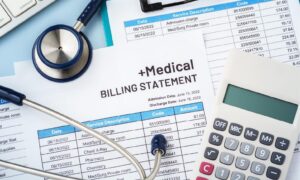The advent of the digital age has revolutionized the way we communicate, connect, and access information. This transformation extends to the healthcare industry, where the use of technology has made it easier than ever to connect patients and doctors.
The digital age has paved the way for innovative solutions that bridge the gap between patients and healthcare providers, enabling improved access to care, enhanced communication, and more personalized medical services. In this blog post, we will explore the various ways in which technology is facilitating the connection between patients and doctors, revolutionizing healthcare delivery, and empowering individuals to take control of their health.
Telemedicine and Virtual Consultations
Telemedicine and virtual consultations have emerged as game-changers in the digital healthcare landscape. Through secure video conferencing platforms and mobile applications, patients can now consult with doctors remotely, eliminating the need for in-person visits for routine check-ups, follow-ups, or non-emergency medical concerns. Telemedicine allows for convenient access to healthcare services, particularly for individuals in remote areas, those with limited mobility, or those who face challenges in accessing traditional healthcare facilities. Patients can connect with doctors from the comfort of their homes, saving time, reducing travel costs, and minimizing the risk of exposure to contagious diseases. Virtual consultations also enable doctors to provide timely advice, monitor chronic conditions, and address minor ailments without the need for face-to-face appointments, ensuring efficient healthcare delivery.
Practice Management Software
Practice management software is a valuable tool that streamlines administrative tasks and enhances the efficiency of healthcare practices. This software encompasses various features, including appointment scheduling, patient records management, billing and invoicing, and reporting capabilities.
It eliminates the need for manual paperwork, reduces errors, and improves overall productivity. Practice management software also enables seamless communication and collaboration among healthcare staff, facilitating a smooth workflow and enhancing the patient experience.
By automating routine administrative tasks, healthcare providers can focus more on delivering quality care and building stronger relationships with their patients. Explore the best practice management software to find a user-friendly and reliable platform. With its comprehensive functionalities, practice management software will play a crucial role in optimizing practice operations and improving the overall efficiency of healthcare practices.
Online Appointment Scheduling and Patient Portals
Gone are the days of waiting on hold to book a doctor’s appointment or going through the hassle of paper-based medical records. The digital age has ushered in the era of online appointment scheduling and patient portals, streamlining the entire process and empowering patients to manage their healthcare conveniently.
With online appointment scheduling platforms, patients can book appointments with doctors, select preferred time slots, and even receive automated reminders. This not only saves time but also reduces the burden on administrative staff and enhances the overall patient experience. Furthermore, patient portals provide secure access to medical records, lab results, and prescription history.
Patients can review their health information, communicate with healthcare providers, request prescription refills, and even track their progress toward treatment goals. Patient portals foster active patient engagement, facilitating a collaborative approach to healthcare where patients can actively participate in their treatment plans, access educational resources, and make informed decisions regarding their health.
Remote Monitoring and Wearable Devices
Wearable devices and remote monitoring technologies have emerged as powerful tools for connecting patients and doctors. Wearable devices such as fitness trackers, smartwatches, medical sensors, and medical sensors can collect valuable health data in real-time, providing insights into various physiological parameters.
This data can be remotely monitored by healthcare professionals, allowing them to track patients’ health status, identify trends, and intervene when necessary. For instance, wearable devices can measure heart rate, sleep patterns, and activity levels, and even detect irregularities that may indicate underlying health conditions.
Remote monitoring enables doctors to proactively manage chronic diseases, monitor post-operative recovery, and provide timely interventions. It also empowers patients to take a more active role in managing their health, as they can track their progress, set goals, and receive personalized feedback.
The integration of wearable devices and remote monitoring technologies not only enhances the efficiency of healthcare delivery but also strengthens the doctor-patient relationship by fostering continuous communication and personalized care.
Health Apps and Digital Health Platforms
The proliferation of health apps and digital health platforms has revolutionized the way patients and doctors connect, enabling a wealth of health-related resources and services at their fingertips. Health apps offer a range of functionalities, from symptom checkers and medication reminders to fitness trackers and mental health support. These apps provide convenient access to information, tools, and resources that empower individuals to take control of their health.
Patients can track their fitness goals, monitor their nutrition, and manage chronic conditions with the help of these apps. Digital health platforms, on the other hand, serve as comprehensive solutions that integrate multiple functionalities and services. These platforms may include features such as appointment scheduling, virtual consultations, health record management, medication tracking, and personalized health recommendations.
By leveraging these technologies, patients can easily connect with doctors, access relevant health information, and make informed decisions about their well-being. Doctors, on the other hand, can utilize digital health platforms to streamline their workflows, access patient data in real-time, and provide personalized recommendations based on individual health profiles.
These platforms facilitate secure communication and collaboration between patients and doctors, enhancing the overall healthcare experience and enabling more efficient and effective care delivery.
The digital age has ushered in a new era of connectivity between patients and doctors, transforming the healthcare landscape. Through telemedicine, online appointment scheduling, and patient portals, patients now have unprecedented access to medical care and can actively engage in managing their health.
Remote monitoring and wearable devices enable doctors to gather real-time health data, facilitating proactive interventions and personalized care. Health apps and digital health platforms provide a wealth of resources and services that empower individuals to take control of their health journey. As we continue to embrace technology, it is essential to prioritize privacy and security to ensure the safe exchange of sensitive medical information.
By harnessing the power of the digital age, we can bridge the gap between patients and doctors, enhance communication, and foster a patient-centered approach to healthcare. Together, patients and doctors can leverage technology to achieve better health outcomes and improve the overall quality of care in the digital era.




































